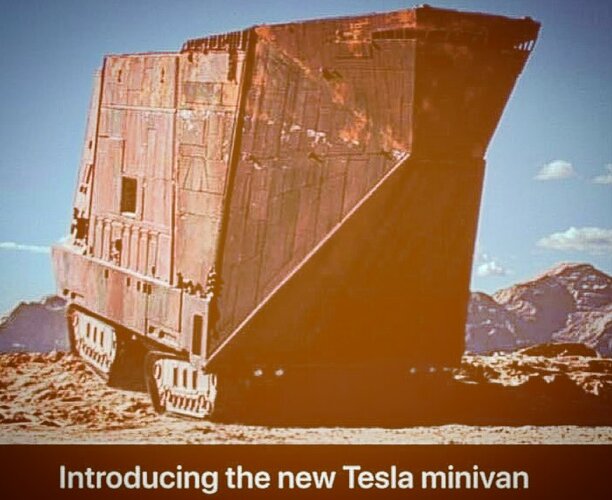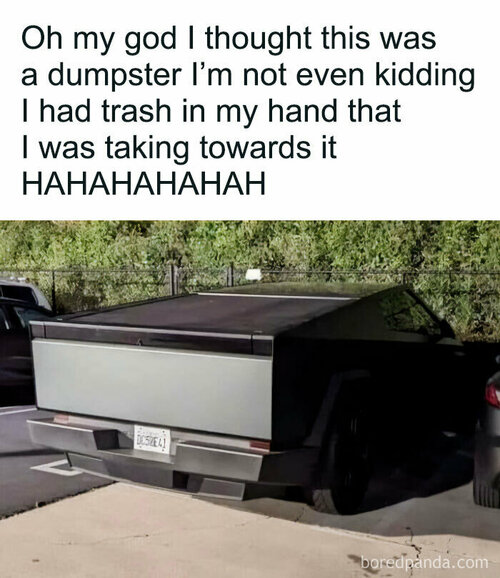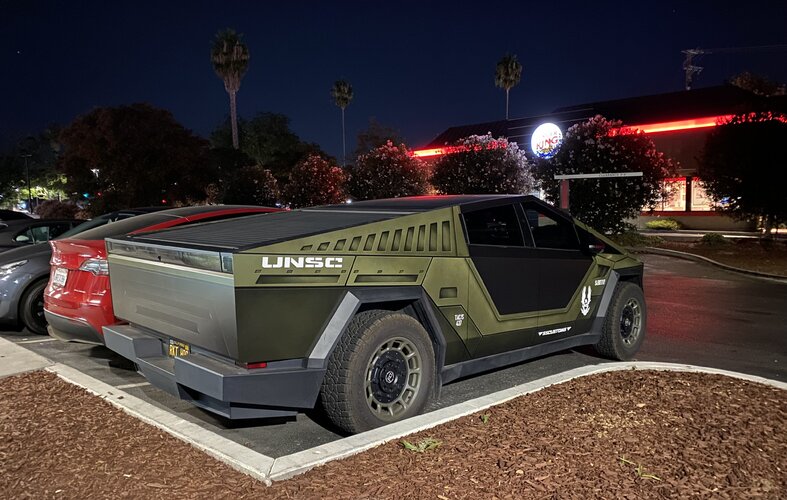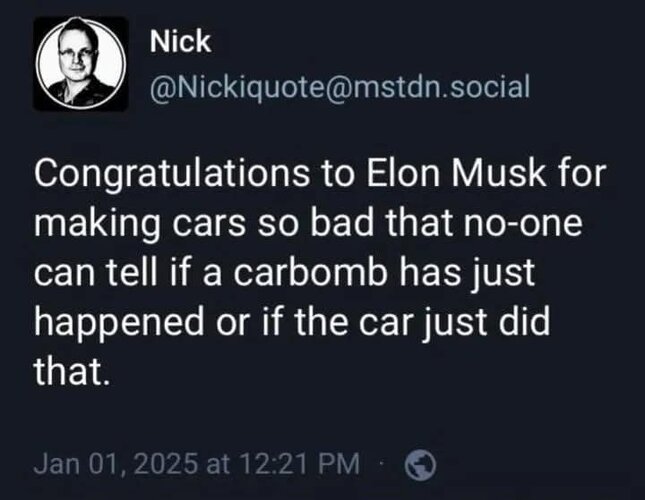WatcherZero
ACCESS: Top Secret
- Joined
- 22 May 2023
- Messages
- 824
- Reaction score
- 1,917
Tesla has laid off its entire Supercharger division (500 staff) along with its entire Public Policy Team (they were responsible for environmental policies and lobbying government for beneficial legislation), it says it will reduce efforts to expand existing charging point locations to a trickle and instead focus on maintaining existing sites.

 www.bbc.co.uk
www.bbc.co.uk
On the one hand this makes some sense as they have recently managed to get their charger format accepted as the US national standard, on the other they are surrendering a market lead as the largest charging network in the US just as 7 of its competitors have ganged up to form their own rival charging station network. It also means they will be unable to push for Teslas charging tech to be adopted widely in the rest of the world. I wonder if this was another condition of the deal he did a couple of days ago in China to legalise Tesla self parking and limited self driving in China in return for giving a 50% stake in his China operations to Baidu (Chinese mapper), that Tesla also stepped aside to make way for Chinese manufacturers in the charging space.

Tesla staff say firm's entire Supercharger team fired
The division responsible for the car-maker's huge fast-charging network is being axed to cut costs.
On the one hand this makes some sense as they have recently managed to get their charger format accepted as the US national standard, on the other they are surrendering a market lead as the largest charging network in the US just as 7 of its competitors have ganged up to form their own rival charging station network. It also means they will be unable to push for Teslas charging tech to be adopted widely in the rest of the world. I wonder if this was another condition of the deal he did a couple of days ago in China to legalise Tesla self parking and limited self driving in China in return for giving a 50% stake in his China operations to Baidu (Chinese mapper), that Tesla also stepped aside to make way for Chinese manufacturers in the charging space.









